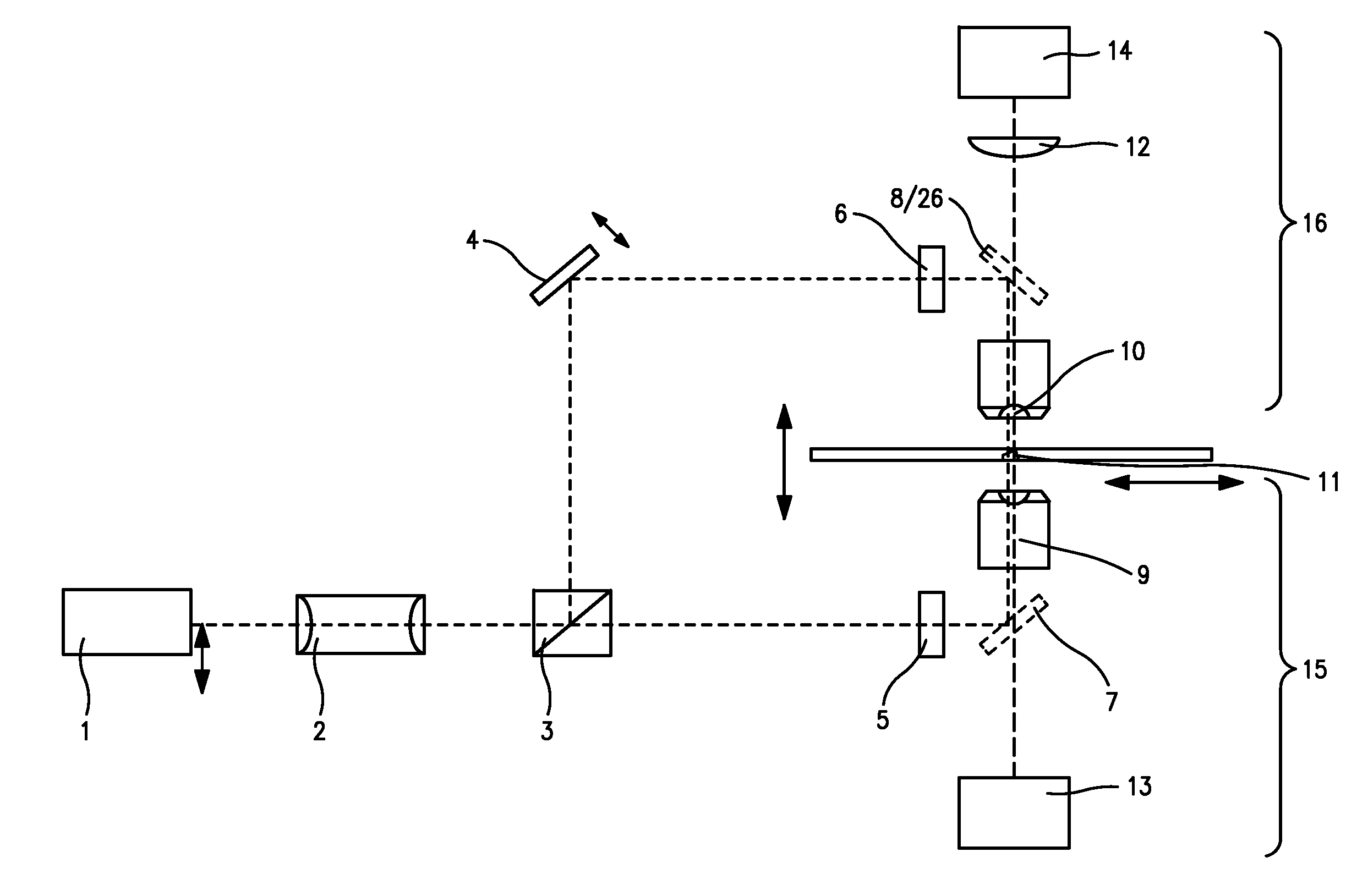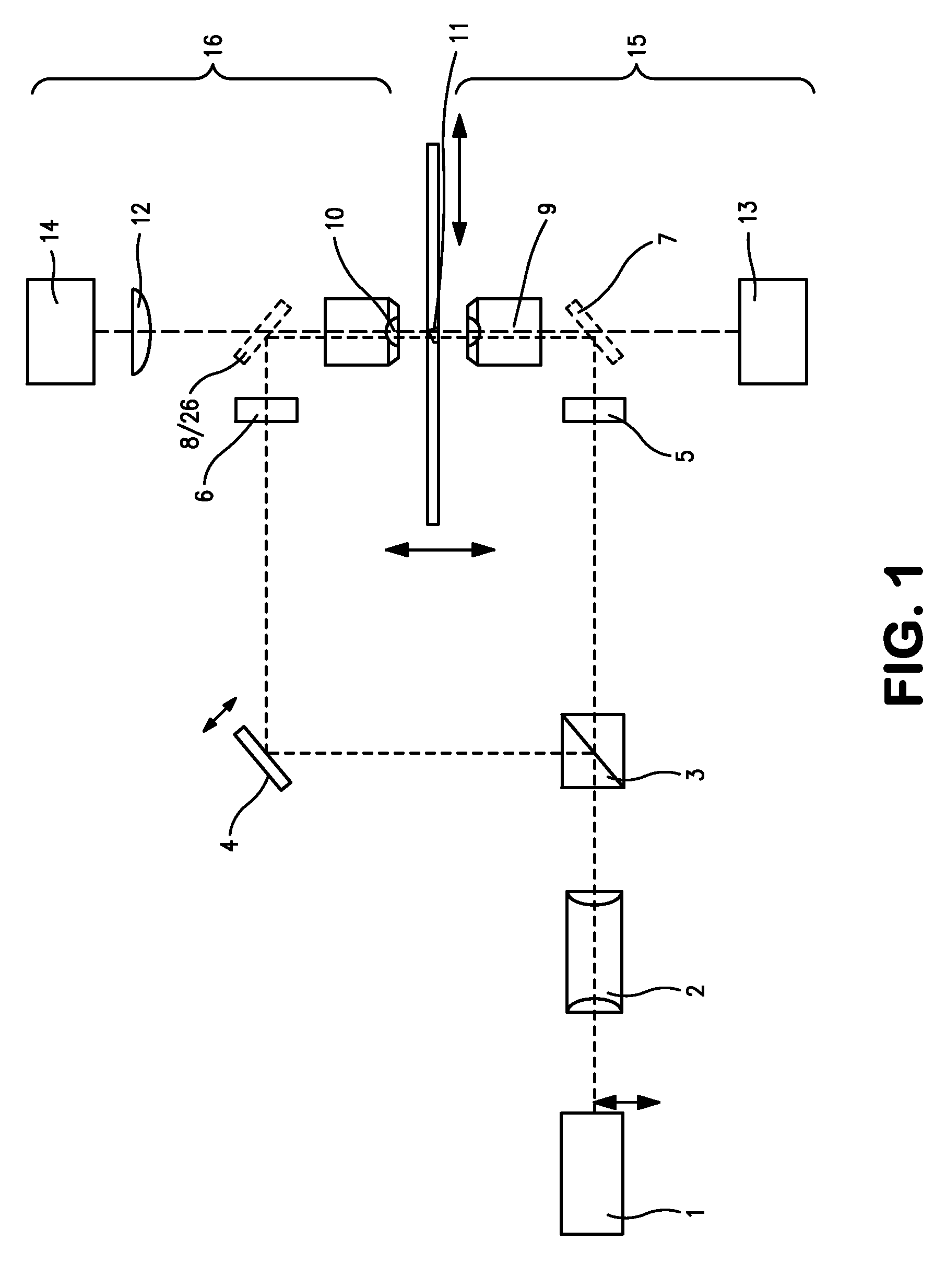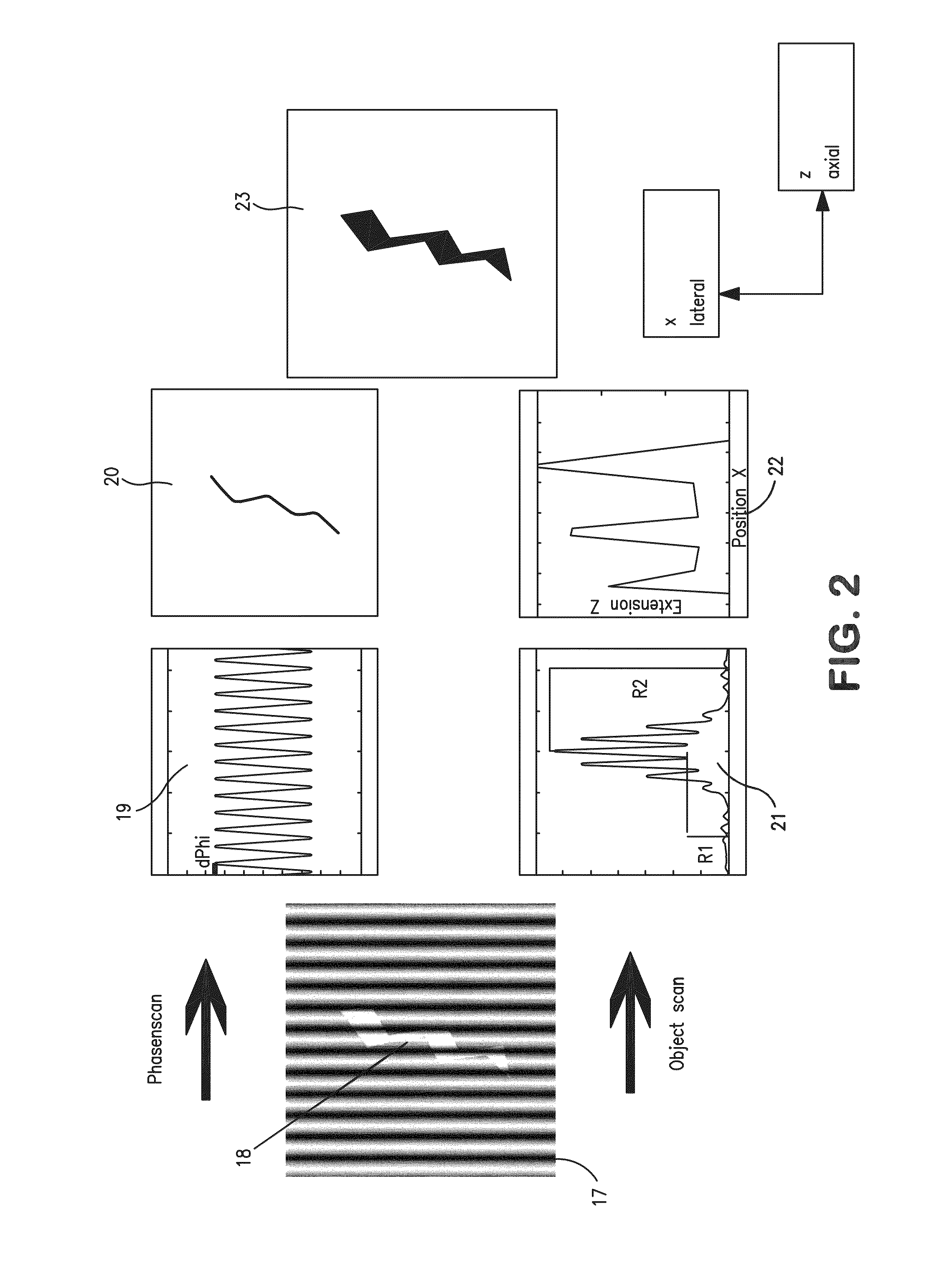Method and an apparatus for localization of single dye molecules in the fluorescent microscopy
a single dye and fluorescent microscopy technology, applied in the field of single dye molecule localization in the fluorescent microscopy, can solve the problems of insufficient resolution of cellular nanostructures to provide full functional information, limited image diffraction in light microscopy, and inability to overcome abbe-limits, etc., to achieve the effect of optimizing the localization process
- Summary
- Abstract
- Description
- Claims
- Application Information
AI Technical Summary
Benefits of technology
Problems solved by technology
Method used
Image
Examples
example 1
Two-Dimensional SPDM Reconstruction
[0253]As a first application example, the SPDM microscopical method according described above was used for the two dimensional (2D) reconstruction of the distribution of membrane proteins. For this example cells of human breast cancer Cal-51 were labeled with yellow fluorescent proteins (YFP). During the SPDM imaging process, the YFP molecules were subjected to an appropriate physical modification based on reversible photobleaching as described above. For smoother appearance and to indicate the localization precision, the pixels (10 nm pixel size) corresponding to the positions and number of the localized fluorescent proteins were blurred via a Gaussian kernel with 15 nm standard deviation. In this example, the (x,y) width of the finest structures resolved (cellular protrusions) in the SPDM images amounted to about 50 nm-60 nm. The number of collected photons per molecule distribution (FIG. 9) allows to estimate the limiting localization accuracy d...
example 2
Three Dimensional SPDM / SMI Reconstruction
[0257]The second example relates to a three-dimensional SPDM / SMI reconstruction of a Cal-51 cell (plasma membrane labeled with physiochemically modified YFP) by first imaging in wide field mode with spatially modified illumination (cos2 intensity distribution along the optical axis). The standing wave field was moved with a step size Δz=25 nm for 5 μs (phase scan). The emission of the cellular plasma membrane protrusions was recorded for every Δz step. Compared to the experimentally effective wavelength (λexc / n≈330 nm) and the accuracy of the z-positioning of the piezo actuator 84 nm standard deviation), this process corresponds to a large oversampling. However, since the total acquisition time was about 20 seconds, there was no need to use larger step sizes or fewer steps.
[0258]By performing a single dimension Fourier transformation along the time axis, and knowing the wavelength of the light pattern (330 nm), the phase was determined for ev...
PUM
 Login to View More
Login to View More Abstract
Description
Claims
Application Information
 Login to View More
Login to View More - R&D
- Intellectual Property
- Life Sciences
- Materials
- Tech Scout
- Unparalleled Data Quality
- Higher Quality Content
- 60% Fewer Hallucinations
Browse by: Latest US Patents, China's latest patents, Technical Efficacy Thesaurus, Application Domain, Technology Topic, Popular Technical Reports.
© 2025 PatSnap. All rights reserved.Legal|Privacy policy|Modern Slavery Act Transparency Statement|Sitemap|About US| Contact US: help@patsnap.com



